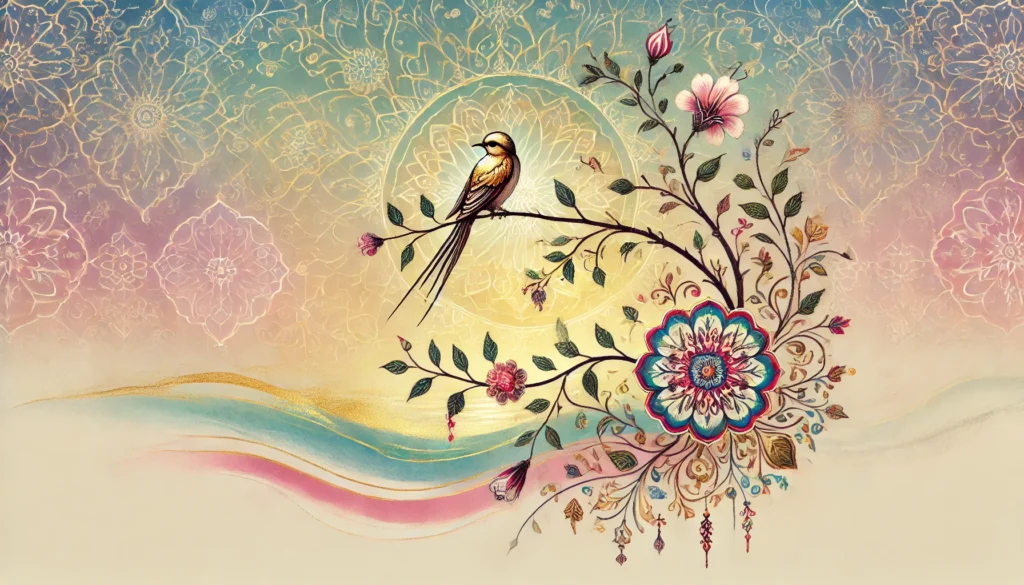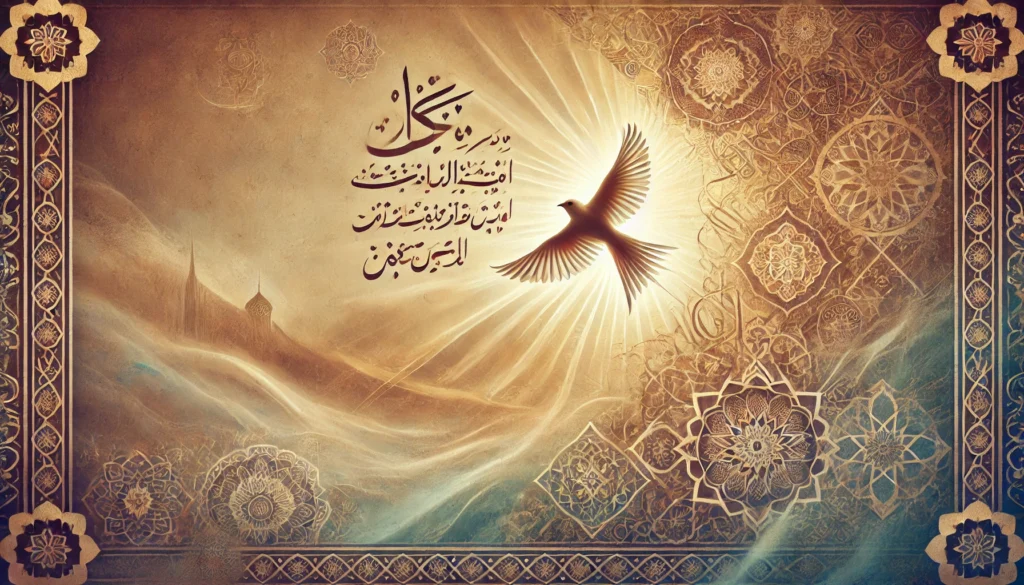Rumi was a famous and amazing Persian and Sufi poet. His full name was Jalal ad-Din Muhammad Rumi and he was born in the 13th century in the Khorasan region which was part of the Persian Empire at that time. Today, this region falls in modern day Afghanistan and Tajikistan. Rumi was famous throughout the world for his deep metaphors and spiritual wisdom and his poetry still holds the same importance for the world.
The imagery found in his poetry, every aspect of it has a unique meaning and is very deep. A common symbol that is often seen in Rumi’s Persian poetry is “wild birds.” Let’s explore the meaning of Rumi Persian Poetry Wild Birds and what the symbol of wild birds represents in his work and why he liked this symbol so much and what is its connection with Persian culture.
Wild Birds: A Metaphor for the Soul
In the poetry of Jalal ad-Din Muhammad Rumi, who is also called as Molana Rumi, wild birds are a powerful metaphor for the human soul. This is a way of representing his spiritual ideas and teachings which inspire every human being to take his inner journey.
1: Freedom and the Soul’s Flight
The freedom of wild birds symbolizes release from the shackles that have bound the soul of man to the materialistic things of the world. Rumi says that the real purpose of a soul is to return to its divine source, and this is possible only when we let go of our inner fears and desires.
2:The Unpredictable Nature of Wild Birds
Wild birds have another meaning such as unpredictability and independence. This represents Rumi’s spiritual teachings that the journey of light is not a planned and predictable thing. A person has to accept his journey by trusting his creator.
3: Connection with Nature
Another important aspect of Rumi’s poetry is its connection with nature and the human soul. The imagery of wild birds shows that the human soul has a very deep connection with nature, which is very important for its spiritual awakening.
ALSO READ: Rumi bird wings in persian art, culture and poetry
Persian Poetry and Wild Birds
The concept of birds in Persian poetry has been quite common even before Rumi, but Rumi gave a spiritual depth to this imagery. In Persian culture and literature, birds are considered a symbol of divine messages and spiritual freedom.

1: The Hoopoe in Persian Literature
A famous bird that appears in Persian poetry is named hoopoe (hudhud). This bird is seen as a spiritual guide, which perfectly aligns with the “guide towards the divine” concept of Rumi’s teachings.
2: Wild Birds in Persian Art
Wild birds are also quite common in Persian miniature paintings and calligraphy. These birds are a representation of visual, spiritual ideas and freedom. These artistic depictions resonate perfectly with Rumi’s poetry.
3: Mystical Interpretations
Wild birds also have a mystical meaning in Persian literature and Sufism. They represent man’s longing towards the divine. Rumi’s poetry beautifully articulates this longing.
Spiritual Lessons from Wild Birds in Rumi’s Poetry
For Rumi, wild birds are not just a metaphor but a spiritual message that touches the heart of every human being.

1: Break Free from Materialism
Just as a wild bird stays away from the cage, the human soul should stay away from materialistic desires. Jalal ad-Din Muhammad Rumi says that real happiness and peace is achieved only when we leave the bonds of the world and live like wild birds.
2: Embrace Your True Nature
Wild birds live life with their true nature. Jalal ad-Din Muhammad Rumi teaches us that we should accept our individuality and uniqueness and become who we are in our journey towards our creator.
3: Find the Divine Within
The biggest lesson of Rumi’s poetry is that the divine is within us. Like wild birds, our soul also tries to return to its real home, i.e., towards its creator.
Conclusion
The conclusion of this Rumi Persian Poetry Wild Birds is that the symbolism of wild birds in Jalal ad-Din Muhammad Rumi’s Persian poetry is timeless and universal. It deeply explores the journey of the human soul, freedom, and divine connection. This imagery blends perfectly with Persian culture and literature, making Rumi’s work even more impactful.
When we read Rumi’s poetry and understand the metaphor of wild birds, we get a spiritual inspiration. This motivates us to embrace the spiritual journey within us and return to our creator.
Frequently Asked Questions
Q1: Why does Jalal ad-Din Muhammad Rumi use wild birds in his poetry?
Jalal ad-Din Muhammad Rumi uses wild birds as a metaphor for the human soul and its journey, which represents spiritual freedom and divine connection.
Q2: What is the significance of birds in Persian culture?
In Persian culture, birds are considered a symbol of wisdom, guidance, and divine messages. They also represent freedom and transcendence.
Q3: How can we relate Molana Rumi’s teachings on wild birds to our lives?
Jalal ad-Din Muhammad Rumi teaches us to embrace our inner spiritual strength, let go of materialistic desires, and trust in our journey towards our creator.
Q4: Are wild birds a recurring theme in Persian literature?
Yes, wild birds are an important motif in Persian literature and art, which highlights spiritual freedom and divine connection.
